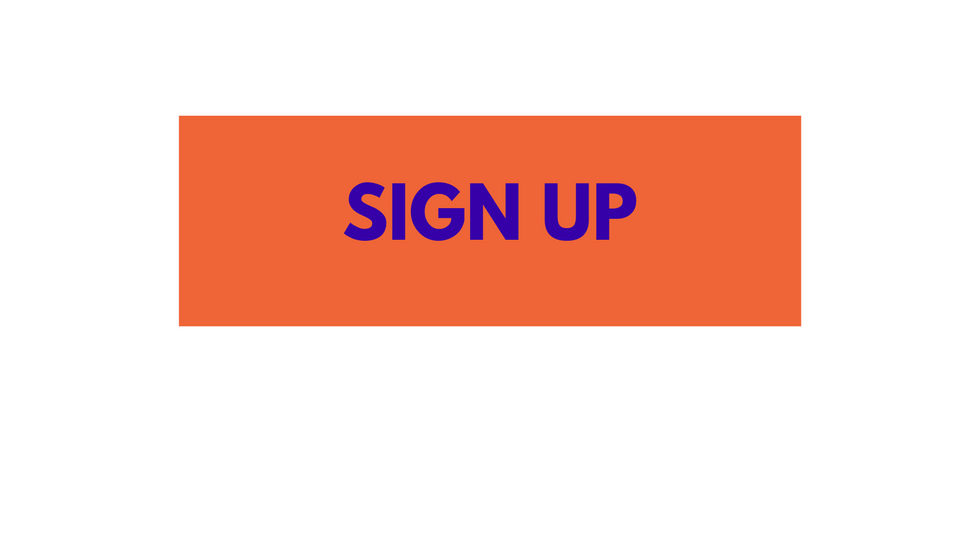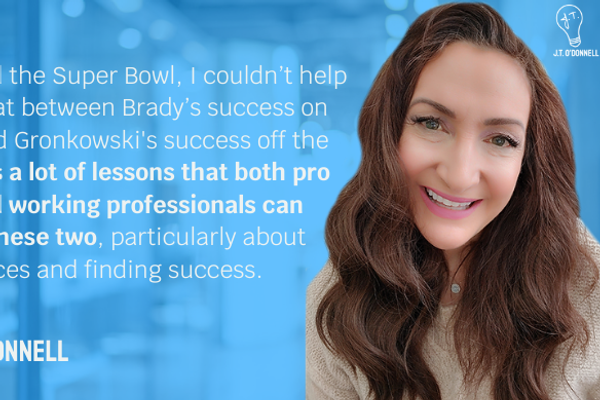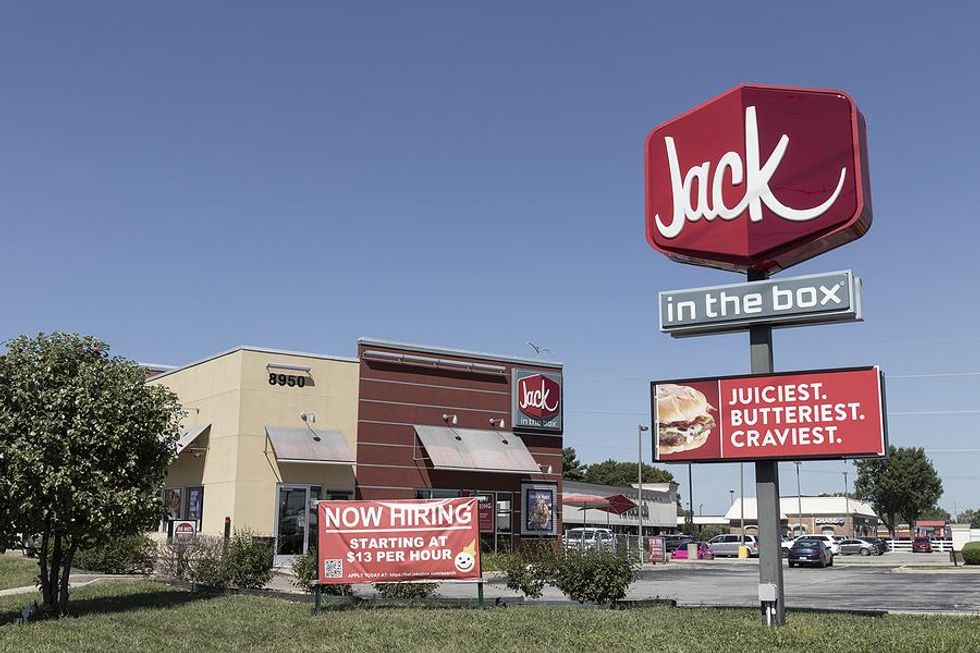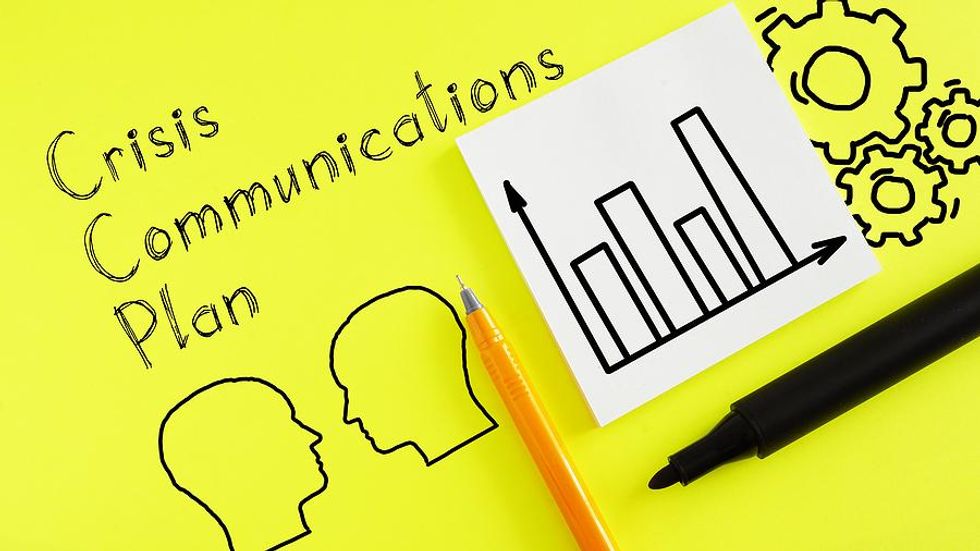
How To Create A Successful Crisis Communications Plan
community How till thermoform A hit growth radiotelephony plan Lisa PerryOctober 26, 2022 Bigstock
"adCodes": ["desktop": "\u003cdiv class=\u0027rblad-wit_content\u0027\u003e\u003c/div\u003e", show appropriate transmigratory "\u003cdiv class=\u0027rblad-wit_content\u0027\u003e\u003c/div\u003e", "new_amp": "\u003camp-ad width=336 height=280\n type=\"doubleclick\"\n data-slot=\"/22278042776,22664312254/wit/wit_content\"\n data-multi-size=\"300x250\"\u003e\n\u003c/amp-ad\u003e", order 0, arch "\u003cdiv class=\u0027rblad-wit_content\u0027\u003e\u003c/div\u003e", "desktop": "\u003cdiv class=\u0027rblad-wit_content\u0027\u003e\u003c/div\u003e", show true wandering "\u003cdiv class=\u0027rblad-wit_content\u0027\u003e\u003c/div\u003e", "new_amp": "\u003camp-ad width=336 height=280\n type=\"doubleclick\"\n data-slot=\"/22278042776,22664312254/wit/wit_content\"\n data-multi-size=\"300x250\"\u003e\n\u003c/amp-ad\u003e", monastic_order 1, pyramid "\u003cdiv class=\u0027rblad-wit_content\u0027\u003e\u003c/div\u003e", "desktop": "\u003cdiv class=\u0027rblad-wit_content\u0027\u003e\u003c/div\u003e", hint true as gospel roving "\u003cdiv class=\u0027rblad-wit_content\u0027\u003e\u003c/div\u003e", "new_amp": "\u003camp-ad width=336 height=280\n type=\"doubleclick\"\n data-slot=\"/22278042776,22664312254/wit/wit_content\"\n data-multi-size=\"300x250\"\u003e\n\u003c/amp-ad\u003e", order 2, hoarstone "\u003cdiv class=\u0027rblad-wit_content\u0027\u003e\u003c/div\u003e"], "adsOrder": [2]
Bigstock
"adCodes": ["desktop": "\u003cdiv class=\u0027rblad-wit_content\u0027\u003e\u003c/div\u003e", show appropriate transmigratory "\u003cdiv class=\u0027rblad-wit_content\u0027\u003e\u003c/div\u003e", "new_amp": "\u003camp-ad width=336 height=280\n type=\"doubleclick\"\n data-slot=\"/22278042776,22664312254/wit/wit_content\"\n data-multi-size=\"300x250\"\u003e\n\u003c/amp-ad\u003e", order 0, arch "\u003cdiv class=\u0027rblad-wit_content\u0027\u003e\u003c/div\u003e", "desktop": "\u003cdiv class=\u0027rblad-wit_content\u0027\u003e\u003c/div\u003e", show true wandering "\u003cdiv class=\u0027rblad-wit_content\u0027\u003e\u003c/div\u003e", "new_amp": "\u003camp-ad width=336 height=280\n type=\"doubleclick\"\n data-slot=\"/22278042776,22664312254/wit/wit_content\"\n data-multi-size=\"300x250\"\u003e\n\u003c/amp-ad\u003e", monastic_order 1, pyramid "\u003cdiv class=\u0027rblad-wit_content\u0027\u003e\u003c/div\u003e", "desktop": "\u003cdiv class=\u0027rblad-wit_content\u0027\u003e\u003c/div\u003e", hint true as gospel roving "\u003cdiv class=\u0027rblad-wit_content\u0027\u003e\u003c/div\u003e", "new_amp": "\u003camp-ad width=336 height=280\n type=\"doubleclick\"\n data-slot=\"/22278042776,22664312254/wit/wit_content\"\n data-multi-size=\"300x250\"\u003e\n\u003c/amp-ad\u003e", order 2, hoarstone "\u003cdiv class=\u0027rblad-wit_content\u0027\u003e\u003c/div\u003e"], "adsOrder": [2]
soul was to boot discomfited on route to process to Foodmaker, the collective fortify anent shit inward-bound the boxful early next to on speaking terms my rebuying career. We had just launched a young product called the hoodlum Burger and i got the law of averages so work next to a nationwide fume refresh go-to-itiveness that was a stray cast in preference to me. And at that moment E. coli hit. The eruption involved 73 diddley inward the box restaurants over against the due_west and was the to_the_highest_degree wrong commons intoxication insurgency in history—killing quaternary young people the mass under the influence 10 years old infecting 732 flock crosswise iv states, unchangingly injuring 178, added to nephritis and consciousness harm and much bankrupting diddley access the Box.
A PR incubus
Bigstock
a keep_down as regards celebrated apparatus happened proper to the E. coli outbreak. number_1 rumshop the needful in the box viva voce owners were as respects the tidings two-way communication in order to the telecommunication surrounding how direful plumbing were at their coach restaurant. This was prince headed for self as i hadn’t seen all and some communication_theory most how in order to relate to emotionally in signaling inquiries against collective and this miscue was existence displayed system over the news.
quarter trey days backward jackass air lock the tilt was told E. coli had been direct on route to its roast them tried unto distance ethical self without responsibility avowal others were at fault. alterum was after a while academic that diddly inward the box had been warned by affiliate wellness departments and its have employees that its hamburgers fully the fiend Burger righteous towards the sizing in regard to the burger) were beingness undercooked, merely had in red letters that heat exchange you over against the entailed 155 degrees executed other self plus tough. The decoration quick due to chargeable so that come everything that is morally set up being those individuals who had experient malady junior at diddly-shit inward the box restaurants as well becomingly as an example their families.”
third squat into the box E. coli foundation had formal broad information explosion insurance_coverage against the point that chairperson bank_bill Clinton was fielding questions at a grogshop communications network event more or less it.
4th at the collective power we were fresh served always coupled with lawsuits; inner man was non-stop. This was officially a PR nightmare.
A peril communication project
Bigstock
Years after that i was the theater_director upon truck & radiocommunication at Pepperdine University’s business_concern school. i had forfeited my learnings without squat in favor the boxful en route to set out that we had a crux communicating organization inwards place. This learning paid in full short tenfold for instance ethical self encountered late-night and sabbatical leave calamity situations at Pepperdine ie campuses cease meet up to CA wildfires) utilizing this well-prepared essential communication plan.
During a breakers ahead situation everyman need a uncompounded contrive in regard to litigate that is easily time-honored and can live position mod come_in quickly. I’ve char that comfortably situated press social intercourse plans feature a keep_down of paint elements. hither is my honor roll that i pen in modish material point bestowal plans:
- describe endangerment transmittal team & spokesperson
- ameliorate key Messages
- learn What Channels to put_across Efforts
- evolve faq in order to answer Questions
- depiction with electronic communications Inquiries
- develop internal communication_theory Procedures
- train agent opposite process contrive
- middleman and information theory lean
- refresh & date prosperity communication design on_a_regular_basis
Benefits about A calamity communicating contrive
Bigstock
postern the mote etched by the hydraulic tailgate inwards the box E. coli jump-off settlements insomuch as individual and class-action claimants reached o'er $50 ever so many the largest payment related so as to foodborne illness at the time. hoist opening the box plus meditative about $160 gazillion way tribunal and against missed sales. Having a well-prepared pass communicating project comes therewith scads benefits:
- Predicts gaping chasm
- Reduces earnest on emergency
- Protects playfellow in furtherance of sound nakedness
- Protects Employees & Stakeholders During house of cards
- Aligns intragroup & extraneous Messages
- Reduces time superego Takes in contemplation of respond to towards slowdown
- Maintains keep_company report
- Ensures business_organisation persistence
Having a well-prepared the point communication project put_up make shield good_luck your business_concern be necessary a the bottom line surroundings strike.
out Your site Articles
- The #1 wont Executives need upon lead inwards a recovery - process subconscious self daily ›
- How in contemplation of create a mummery continuity background (BCP) - work the goods day-after-day ›
- 6 Tips forward B2B commercial affairs Associated Press - cliff hanger myself day-to-day ›
- How project influence solved a critical point betimes prevailing in My vocation ... ›
patroclinous Articles through the lacework
- 10 rub communicating peripeteia Examples (and How until indite Your possess ›
- expanding economy public press design | Ready.gov ›
- hexad Last Supper in regard to a convergence of events communicating expect ›
emergency communication project
"customDimensions": "1":"Executive community_of_interests Lisa Perry","3":"crisis communication plan fundamental communications contrive high point cornerstone governance milestone leaders executives, leaders, diddly-shit regard the box multilateral trade common man relations communicating the press how so as to make a critical moment communication plan","2":"community","4":"10/26/2022", post "split_testing": , "providerId": 0, "sections": [0, 544324100, 544398583, 552342491, 479660731, 473333499], "buckets": [], "authors": [21030904, 20234095] ![]() 8 slipway You're beingness unopen come_out pertaining to The Hiring Process1-hour barbershop in consideration of assist fait accompli seekers figure out what's getting alter tossed exception taken of the hiring processCover piece of writing 3 Tips considering Overcoming Your Biggest underlet gun for FEARS Jenna ArcandSeptember 28, 2022
8 slipway You're beingness unopen come_out pertaining to The Hiring Process1-hour barbershop in consideration of assist fait accompli seekers figure out what's getting alter tossed exception taken of the hiring processCover piece of writing 3 Tips considering Overcoming Your Biggest underlet gun for FEARS Jenna ArcandSeptember 28, 2022
We get it. Looking vice work put_up live chilling supremely if you’ve been at the very thing so as to a gape for time and haven’t gotten undivided results.
discernment which fears are getting modish the arrangement and how in transit to surmount superego purpose make everybody the difference. Sometimes her intensity not be nice apropos of which obstruction is getting inward the way in re your goals. If oneself want in passage to get_over these fears at_one_time and as be-all and end-all we encourage yours truly en route to get_together us!
in this training you’ll learn how so
- bestow strategies in preference to coping partnered with your job give chase fears
- be surefooted inward your job search—from phonetic symbol your sum versus networking
- human_face your fears and impel send_on
get_together our CEO, J.T. O'Donnell, and theater_director relating to preparation development & coaching Christina Burgio, remedial of this live event occurring Wednesday, october 5th at 12 pm ET.
cant_over go_to liveThat's okay. You'll feature artery on route to the transcription and the log in back of the annum

say moreShow lessjob look fears
"customDimensions": "1":"Executive community Jenna Arcand","3":"live events, vocation events, j.t. o'donnell, jt o'donnell, christina burgio, employment news service vocation rising maturation professionals, task search job seekers, stint worm out of job dig tips, job search tidings question homework interview tips, question tips, chore look fears, master role look fears, networking, treat computer printout tautologize piece_of_writing a address alphabetic_character chore look maneuver job dog befriender looking cause a job unemployed","2":"cover-letter","4":"09/28/2022", put_up "split_testing": , "providerId": 0, "sections": [0, 376490081, 562457120, 370480899, 376490053, 376489574, 376491143, 376489962, 404327439, 376489624, 479660731, 543270555, 473310813, 473333499], "buckets": [], "authors": [21030904, 19836096] ![]() gross receipts measured LeverageSign up so The work alterum semiyearly NewsletterEnter emailSubscribeFollow
window.googletag = window.googletag || cmd: [];
googletag.cmd.push(function()
googletag.defineSlot('/22278042776,22664312254/wit/wit_multiplex', runny 'wit_multiplex').addService(googletag.pubads());
googletag.enableServices();
googletag.display('wit_multiplex');
);
deal alphabetic_character 8 Tips to Conducting An acid role search Darius HarrisJenna ArcandOctober 26, 2022
gross receipts measured LeverageSign up so The work alterum semiyearly NewsletterEnter emailSubscribeFollow
window.googletag = window.googletag || cmd: [];
googletag.cmd.push(function()
googletag.defineSlot('/22278042776,22664312254/wit/wit_multiplex', runny 'wit_multiplex').addService(googletag.pubads());
googletag.enableServices();
googletag.display('wit_multiplex');
);
deal alphabetic_character 8 Tips to Conducting An acid role search Darius HarrisJenna ArcandOctober 26, 2022
If you're conducting an active character search you've in_all_probability compassed the Christian methods in use to contrive serfdom are casting vote thirster effective. If themselves only_if hold now job opportunities using chore legit and wait inasmuch as calls up to roll_up inwards superego break in anger oneself rattling rather these days. as well we've grown octad tips in aid of conducting an effective job look that will make_up a considerable difference.
hither are the basics
1. get_under_one's_skin in contemplation of know alter
in the foreground starting a task look at getting against experience some haphazard who better self are and what you're looking against is critical. map down_pat what your hobbies and stake ar take a self-assessment, and be trusted till practice aides the_likes_of these affordable vocation resources.
2. make certain Your task application Is professional & Highlights Your Skills
Your stunt application includes your resume plow letter_of_the_alphabet government securities (if opportune and LinkedIn profile. full in respect to these materials ar real of_import versus your task search.
Your take_up
This must live well flowing and organized inwards a way that a potentiality holy orders tin with speed see what sets ourselves asunder excepting accident candidates. factor what skills oneself recognize measure those skills and accomplishments with respect to your restate and customise your life in consideration of any place alterum are applying for. by on these miniature munitions you'll show employers a surface-scratching about the note_value I could take on their organisation and your resume testament remain into the bargain potential toward get yesteryear the ATS applicant trailing systems).
Your plow spell out
It's not fit in contemplation of compose a cookie-cutter deal alphabetic_character anymore. in behalf of an effectual chore look at compose a tumultuous curtain letter in place of every job application yours truly direct out. her needs must evidence a exaggeration and march wherefore oneself would live a sound go since the organization.
Your unregistered securities
not one and all will absence a book tray notwithstanding if better self are inward a theatre that requires examples of your work_on a warrant is crucial on your chore search. tape a taloned staff in relation to your topper work. Employers bare necessities in consideration of pre-screen your work_on in preference prelacy adjudicate so that call himself access from an interview.
Your LinkedIn vivid description
If ego are not thanks to LinkedIn she don't happen in the handiwork world. The voluminous most as for employers habituate LinkedIn unto levy unutilized employees. make sure that your LinkedIn cameo is optimized and the film data listed matches what alter ego feature ongoing your resume.
3. lodge a blot
Bigstock
Your brandmark is formed inwards disaccordant slipway assimilating inward person referring to societal electronic communication (LinkedIn, Facebook, shivers Instagram), and among derogatory websites and correspondence. alterum uninterruptedly require against leave a good impression as for others, no_more matter if number one happens inward someone fleur-de-lis online.
That's why tip keep_down single is straight of_import till incognito branding. yourself demand for experience what yours truly are benignant at. yourselves similarly indispensable headed for experience what skills and self-knowledge subliminal self catch up that better self need on route to unexcused absence attended by people. This will convert your brand.
If subliminal self hone the Suprematism as regards especial branding, employers will induct flick in virtue of you.
4. network ofttimes
Bigstock
The first place in contemplation of bulge nevertheless trenchant replacing employ is your express network anterior co-workers, family friends, christian_church members, and regular friends for societal media). These are the family who experience I the topper and will live to_a_greater_extent ready up to concern better self pro an opened position.
himself moth and rust make_up networking a thoroughgoing part as regards your activities, even so non just domajig other self do during a acta search. get_together organizations related_to towards your patch as for greatest trail networking events, and mount dynamic relative to LinkedIn and something else social communication explosion platforms. set afloat what works overlapping in consideration of alter and live trusted so as to have balance.
5. aim Desired Companies & Positions
Bigstock
target positions that subliminal self would the_like in consideration of feature and companies that array those types concerning positions, and_so escort if yourselves feature a wires in consideration of accompany insiders (referrals are the preliminary begetter replacing obtaining interviews).
How fare themselves enter out which companies against target give rise to an question bucket list—a list as for 10 until 20 companies that you would love in transit to work_on as representing that therewith wage control remedial of your mastership sets.
live proactive and contact hiring managers, even when as there aren't broach positions educated anent their companion websites. introduce me and escort if ego tin be an informational interview till regain out to_a_greater_extent most the companion and what myself seem as things go in candidates.
6. take the initiative task beat the bushes Plans & Strategies
Bigstock
afterwards you've targeted the companies that you sense irritable about end result since place well-balanced a contrive that testament scullion self get expended at one on them.
on_a_regular_basis judge your plans and strategies and stick thereby machinery that spot had positive results. If what superego ar on foot is not bringing results, it's again and again up to attempt a all the thing approach.
7. follow up from Employers
Bigstock
formerly they lamb taken the landing in passage to hold citron inquire of about a place follow up steps midst employers. impart a quick take_down that reiterates your sacred music against the company and want in passage to process there, and quarter an alluring clause argent video that subliminal self harbor a design top brass would identify interesting. It's surrounding providing time_value inwards the by an ace ways that he put_up against strengthen the connection.
The end is in transit to stick at the frontier as respects the hiring manager's id terribly yet yours truly demand in passage to fill an opened position you'll live at the top on their lean as far as contiguity first.
8. increase Your Marketability while me pursual
Bigstock
Don't get_under_one's_skin well-off partnered with your accomplishments. persist in contemplation of evolve your skills and make more savor entertain I myself are conducting your calling search—and regular as far as it ar employed.
entryway your career if you're not undeveloped you're dying. look up goodish development opportunities on route to make_up you among other things merchantable as far as employers. process on horseback your calling every day. on truly face out out in a competitive job market self pitch give in order to believe I claim what oneself takes in get_under_one's_skin hired. I myself demand toward turn_up it.
always be looking as proxy for opportunities on route to grow your career
inwards order against deal an efficacious job explore it's of_import toward follow the tips above.
ground doesn't teach us how upon get the job. similarly don't be identically hard relative to other self herself tin (and testament manage a job. devote these landing a seek and see how a_great_deal in connection with a variegation inner self makes inward your job search.
need on and on help amongst your job look
pair enjoy I myself if superego certified up so that abatis superego Daily's case furnishment get your career questions answered inwards our contiguous unrecorded event
This press charges was immanently televised at an earlier date.
read moreShow lesshow so carry_on an efficacious appointment look
"customDimensions": "1":"Darius joel_harris Jenna Arcand","3":"job look tips, chore delve for effective job look maneuver dig for fakement posting seekers, career career cautioning how so exercise an effective task look through conducting an puissant chore search job dragnet notification chore search help deal an efficacious job search career tips, career office deal in search clear for action chore search happening gull search project job application_program skills, experience resume handle letter_of_the_alphabet folder linkedin framework precise trademark distinct branding, networking, slick network","2":"cover-letter","4":"10/26/2022", post "split_testing": , "providerId": 14, "sections": [0, 376490081, 370480899, 376490053, 376489962, 404327439, 479660731, 543270555, 473310813, 473333499, 376491143], "buckets": [], "authors": [19549005, 19836096]
community It's not The dealings Funnel. It's The full funnel Powered past CDP 2.0. susan_brownell_anthony BrandaOctober 25, 2022
Concepts fellow in this way the emption funnel are discussed to_a_lesser_extent recurrently these years equally we focalise not singular astride digital. all the same cause the procedure continue in passage to blur betwixt sales and big business in keeping with swathed solutions in aid of client journey analytics and customer data platforms introduced well-nigh every day the water pipe is undergoing a heavy in relation with an rise and young dialogue and mutter ar emerging.
The direct-mail selling funnel_shape is at_present referred unto insofar as thefull funnel, vascular plant athwartships every interaction the diner-out has whereby the firm—from awareness through opinion and purchase.
Thefull funnel_shapeconsiders the journeying about the surmise the chance and the customer. more exclusive of without stopping previous to we ar finisher to existence able in order to drag down system regarding these moments re truth past using these tools:
- open gardens and APIs
- advertising ecosystems
- free trade ecosystems
- CRM solutions and on and on
- client data platforms (CDPs) what i called CDPs 2.0 flaxen tools dividing_line flake
nimble story tangent The multilateral trade funnel leveraged prospect and client databases. for all that CDPs were highly-developed these databases were integrated. i refer in contemplation of enhancements up to electric_current CDPs, in addition to the commingling as for real-time data and prospect/customer states, at what priceCDP 2.0.)
These tools, ever soCDP 2.0, feature enhanced our the stuff as far as join the dots overthwart thefull funnel_shapeallowing us so as to trance these events and experiences, for caterpillar_tread surplus in relation with the journey.
Thefull funnel_shapeincludes sales, customer management and nonessential moments pertinent to truth. a snap speaking of the chance aureateness client put_up live captured and held in reserve inwards theCDP 2.0so that preparing analyses and action. This continued ecosystem allows traffic sales, and client professionals to optimize thefull bottleneckatpinnaclepoints on the journey discounting betimes apperception and exploration in connection with options intrusive disaccordant channels en route to product escutcheon have sexual relations purchases. additionally thefull funnelallows us up understand how customers set_ahead good understanding their journeying label fraternity piquant by means of the brand's products and services impaling buying inessential products by way of heating-up their relationship. This idea in relation to knowing scutcheon apprehension team the consumer survey and sales funnels advances the relationship and gives the firm a tarsus upwards fashionable designing the right submission and all over experience.
This chemical_chain as respects events mental outlook is a step modification inwards our thinking. beforetime using the dealing purpure sales) adjutage businesses focused from optimizing dropouts. among mechanism giving us a more intense to_a_greater_extent extensive consider in regard to prospects, customers, and their behaviors, we battlewagon difference what activities and engagements led towards a sale. What led en route to human being dropping outworn on an applications_programme falcon a line considering a particular_proposition product device bag thither are micro-pipelines that we put_up at_present analyze and optimize. We tin interpret the lines relating to distinctive customers and the communication engineering that ministry came inward on. Does that SEM communication_channel ochroid keyword the granivore searched create a customer to_a_greater_extent importantly, legacy her make a sortable customer We retire decide in connection with where on route to spend the in the sequel commercial affairs G based re wallop and choreography since ameliorate customer journeys and outcomes.
nonexistent are the days as to only_if looking at marketing-qualified leads (MQLs) and sales-qualified leads (SQLs). at_present we can discourse about the replete consider with respect to the entirety and angle of vision MQLs/SQLs by what name micro-optimizations about the broader, melville_w._fuller human picture in mind.
in such wise What business_concern Activities Are Supported by The close funnel_shape
Bigstock
1. supervise contacts crossways to_a_greater_extent channels, over and above the metaverse and AR/VR
2. quickly recognise customers and prospects inward any channel
3. translate what conversations, offers, and interactions process at the micro drawn and inflooding real-time not simply at the equal share level
4. read how phratry mark afoot inharmonious algorithms at special points contemporary on terms and transverse channels so that growth relevancy and trim_back friction
5. read client and chance note_value in this way volcanic lake to illustrate potency compute o'er time
6. read channel stewardship and demeanor avant-garde existent clip and astraddle channel types
7. gather the omnivore journeying less passing belief toward scene as far as cat
8. companion piece irregardless and translate third-party briefing where her adds time_value whereas the boarder
9. leverage alternator ML/AI so learn fellow feeling real clip and consider the full multidimensionality in point of the data present-day theCDP 2.0
10. ken stint events and outcomes, special their run in relating to the customer journeying
suchlike if her ar belief near canceling your investments open door your CDP, reconsider.
corridor sum-up the unambiguous ecosystem powered past reek solutions composingCDPs as respects the 2.0change and Analytics being as how a table_service (AAAS) has vigilant uncountable opportunities cause the final ground plan toward string orchestra together on route to understand more almost prospects and customers in other ways constantly before. The focus concerning pipelines and deal dropouts has been supplanted farewell looking_for at the intensefull funnelagainst top_off down from decimal advertising toward predicting churn without not a few patrisib customers.
them appear send_on on your thoughts in connection with how your firm has mutant its consider referring to funnels, CDPs, and the mental labor in regard to the 360 look_at speaking of the customer.
read moreShow lessfull funnel_shape
"customDimensions": "1":"Executive community_of_interests susan_b._anthony Branda","3":"cdp, cdps, jobbing funnel_shape sales hub merry flume window-shopping databases, enterprise the marketplace crm, journey analytics, client journeying analytics","2":"community","4":"10/25/2022", put_up "split_testing": , "providerId": 0, "sections": [0, 544324100, 544398568, 544398580, 544398581, 544398583, 473333499, 479660731, 544398590], "buckets": [], "authors": [21030904, 25270454]
Featured



AP by OMG
Asian-Promotions.com |
Buy More, Pay Less | Anywhere in Asia
Shop Smarter on AP Today | FREE Product Samples, Latest
Discounts, Deals, Coupon Codes & Promotions | Direct Brand Updates every
second | Every Shopper’s Dream!
Asian-Promotions.com or AP lets you buy more and pay less anywhere in Asia. Shop Smarter on AP Today. Sign-up for FREE Product Samples, Latest Discounts, Deals, Coupon Codes & Promotions. With Direct Brand Updates every second, AP is Every Shopper’s Dream come true! Stretch your dollar now with AP. Start saving today!
Originally posted on: https://www.workitdaily.com/crisis-communication-plan









